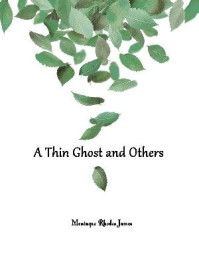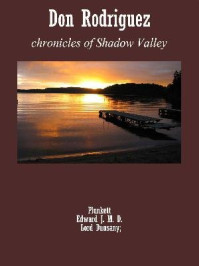




We now come to a class that are destined, I think, to be the raspberries of the future, or, at least, a type of them. I refer to the seedlings of the three original species that have been described. As a rule (having exceptions of course), these native seedling varieties are comparatively hardy, and adapted to the climate of America. This adaptation applies to the South in the proportion that they possess the qualities of the Rubus Strigosus or Occidentalis . To the degree that the foreign element of R. Idoeus exists, they will, with a few exceptions, require winter protection, and will be unable to thrive in light soils and under hot suns. Forgetfulness of this principle is often the cause of much misapprehension and undiscriminating censure. I have known certain New Jersey fruit growers to condemn a variety unsparingly. Would it not be more sensible to say it belongs to the R. Idoeus class, and, therefore, is not adapted to our climate and light soil, but in higher latitudes and on heavy land it may prove one of the best?
It should here be premised that these seedlings originated in this country. Perhaps they are the product solely of our native species, or they may result from crossing varieties of R. Idoeus , in which case they will exhibit the characteristics of the foreign species; or, finally, from the foreign and our native species may be produced a hybrid that will combine traits of each line of its lineage. A conspicuous example of the second statement may be seen in Brinkle's Orange, originated by Dr. Brinkle many years ago. It is essentially an Antwerp in character, and yet it is more vigorous, and adapted to a wider range of country than the Antwerp. The berry is of a beautiful buff color, and its delicious flavor is the accepted standard of excellence. At the same time, it is well known that it will not thrive under hot suns or upon light land. It can be raised south of New York only in cool, moist soils, and in half-shady locations; but at the North, where the conditions of growth are favorable, it produces strong branching canes, covered with white spines, and is exceedingly productive of large, light-colored berries that melt on the tongue. There is the same difference between it and the Brandywine that exists between Stowell's Evergreen and flint field corn. It invariably requires winter protection.
The Pride of the Hudson possesses the same general character as the Orange, and approaches it very nearly in excellence. It certainly is the largest, most beautiful red raspberry now before the public; but in its later development it has shown such sensitiveness to both heat and cold that I cannot recommend it for general cultivation. Give it a moist soil and a half-shady location, such as may be found on the northern side of a fence or hedge, and it will become the pride of any northern garden; but in the South, and on light soils, it can scarcely live. It should have winter protection.
In contrast with these native berries of foreign parentage, we have the Herstine; Mr. B. K. Bliss, the well-known seedsman of New York City, kindly furnishes me the following facts of its history: "About ten years since I was invited, with several gentlemen (mostly horticulturists), to visit the late Mr. Herstine, at Philadelphia. We were to examine a lot of seedling raspberries, and select names for those that we thought worthy of general cultivation. We found quite a company there from the vicinity of Philadelphia and from Washington, while New York was represented by such eminent authorities as Dr. Thurber and A. S. Fuller. The raspberry bushes were completely loaded with large fine fruit—the finest I ever saw. Each variety was carefully examined, and the guests voted as to which, in his opinion, was the best. The Herstine stood first and the Saunders second. Mr. Herstine explained that they were raised from the Allen raspberry, which had been planted in alternate rows with the Philadelphia." This parentage would make it a hybrid of the R. Strigosus and the purple cane branch of the R. Occidentalis species; but the plant and fruit indicate the presence, also, of the R. Ideous element. After several years' experience on my own place, I regard it as the best early raspberry in existence. The berry is large, obtusely conical, bright red, and delicious in flavor. It is scarcely firm enough for market where it must be sent any great distance, but if picked promptly after it reddens, and packed in a cool, airy place, it carries well and brings good prices. The canes are strong, red, stocky, and covered with spines. They are but half-hardy, and I think it is best to cover them before the first of December, in our latitude. The canes of the Saunders, also sent out by Mr. Herstine, are much darker in color, and not so vigorous, but sufficiently so. The berries are large, ripen later, are more globular, and are of the same excellent quality. It deserves greater popularity than it has received. It is, also, only half-hardy.
In the Clarke, we undoubtedly have a variety containing considerable of the R. Idoeus element. The berries are often very large, bright crimson, conical, with large, hairy grains. Occasionally, the fruit on my vines was very imperfect, and crumbled badly in picking. I found that by cutting the canes rigorously back—even one-half—I obtained much larger and more perfect berries, and in increased quantities. The canes are very strong, upright growers, ending usually in a thick tuft of foliage, rather than in long, drooping tips. It was originated by Mr. E. E. Clarke, of New Haven, Conn., and is but half-hardy.
In the New Rochelle, we have a hybrid of the black-cap and red raspberry, the R. Occidentalis element predominating, and manifesting itself in the stocky and branching character of the canes, and in the fact that they propagate themselves by tips, and not suckers. The New Rochelle, originated by Mr. E. W. Carpenter, of Rye, N.Y., is perhaps the best of this class. It is very vigorous, hardy, and enormously productive, and the fruit is of good size. I do not like its sharp acid, however, and its dun or dusky-brown color will probably prevent it from becoming a favorite in market, since bright- hued berries are justly much preferred.
But Mr. Carpenter has sent out another seedling which, I think, is destined to have a brilliant future—the Caroline, It is thought to be a cross between the Catawissa and Brinkle's Orange. The canes are perfectly hardy, very strong, vigorous, branching, light-red, with a lighter bloom upon them here and there. It suckers freely, and also propagates itself sparingly from the tips. The fruit is exceedingly abundant and is a round cap of a beautiful buff color, almost equalling Brinkle's Orange in flavor. I think it will grow anywhere, and thus will find a place in innumerable gardens where the Orange does not thrive. At the same time, it is good enough for any garden.
The Ganargua was said to be a hybrid, but Mr. J. J. Thomas writes to me: "I have never been able to discover proof that it is one. I think it all R. Occidentalis —a variety."
The Reliance, a seedling of the Philadelphia, but far superior to it, is doing remarkably well on my place, and I hear favorable accounts from other localities.
There are many others that are either old and passing into obscurity or else so new and dubious in character that limited space forbids their mention. We will close this sketch of varieties with the Cuthbert, which that experienced and careful horticulturist, Dr. Hexamer, calls the "best raspberry now in existence."
This is a chance seedling, which the late Thomas Cuthbert found in his garden, at Riverdale, N.Y. His son has kindly furnished the following facts:
"The raspberry in question was discovered by my father about eleven years ago in the garden of our country seat at Riverdale-on-the- Hudson. It is probably a seedling of the Hudson River Antwerp, as it was found growing near the edge of a patch of that variety, but its great vigor of growth and the size and quality of the fruit marked it at once as a new and distinct kind. Its canes were carefully separated from the others and a small plantation made of them. The next year, and from time to time since, plants were given to our friends in various parts of the State for trial. Without exception, their reports have been favorable, particular mention having been made of their unusual vigor of growth, their hardiness, and the firmness and good keeping qualities of the fruit. The first year or so we gave the canes winter protection, but finding that it was unnecessary, we have discontinued it, and I have never heard of the canes being winter- killed."
From other sources I learn that Mr. Cuthbert made an arrangement with a nurseryman by the name of Thompson, to propagate and send out the variety. This gentleman dying soon after, the stock came into the possession of Mr. H. J. Corson, of Staten Island, N.Y., and by him and Mr. I. J. Simonson, a florist, the plants have been sent out to different parts of the country. This dissemination was very limited, and was characterized by an almost utter absence of heralding and extravagant praise. The berry has literally made its way on its own merits. Dr. Hexamer remarked to me that he had had it for years, and had wondered why its merits were so overlooked. My attention was called to it in the summer of 1878, and I took pains to see it in several localities. The large size of the berries, their firmness and fine flavor, convinced me that it was very valuable, and the fact that I found it flourishing luxuriantly on New Jersey sand, and maintaining a perfectly healthful foliage under an August sun, led me to believe that we had at last found a first-class variety that would thrive on light soils and under hot suns.
The late W. C. Bryant, the poet, himself well versed in horticulture, closed a letter to me with the following words:
"It has always seemed to me a scandal to our horticulture that in a region where the raspberry grows wild, we should not have a sort that would resist both the winter cold and summer heat, and produce abundantly."
After another year of observation and of much correspondence, extending even to California, I am convinced that the Cuthbert does "resist both the winter cold and summer heat, and produce abundantly," far better than any other raspberry that equals it in size and flavor. The canes are strong, upright, branching, if space permits, reddish- brown, spines abundant, but not very long and harsh. It is a rampant grower on good soil, but the foliage, so far from being rank and large, is delicate, and the under side of the leaves has a light, silvery hue. After once getting hold of the soil, it suckers immoderately, but is no worse in this respect than other vigorous varieties; and this tendency rapidly declines after the second year. Is it perfectly hardy? No; and I do not know of a single good raspberry that is; except, perhaps, the Turner, which, however, is inferior to the Cuthbert. I have seen the latter badly winter-killed, but it had stood eight years on the same ground without injury before. Then, because of a rank growth late in the season, that especial patch was hit hard, while other fields, but a few miles away, were unharmed. If planted on well-drained soil, where the wood could ripen well, I think it would be injured very rarely, if ever; but I have no faith in talk about "perfectly hardy raspberries." Those who observe closely will often find our hardy native species killed to the ground, and I think many varieties suffer more from the mild, variable winters of the Middle States than from the steady cold and snowy winters of the North. Moreover, any variety that has not the power of maintaining a healthy foliage through the hot season will usually be too feeble to resist the winter following. The question of hardiness can often be settled better in August than in January. One of the most hopeful features of the Cuthbert, therefore, is its tough, sun-enduring foliage, which enables the wood to ripen perfectly. It has never received winter protection thus far, either in this region or in Michigan, where it is largely raised, but it may be found necessary to shield it somewhat in some localities. It is both absurd and dishonest to claim perfection for a fruit, and the Cuthbert, especially as it grows older and loses something of its pristine vigor, will, probably, like all other varieties, develop faults and weaknesses. We cannot too much deprecate the arrogant spirit often manifested in introducing new fruits. Interested parties insist on boundless praise, and if their advice were followed, the fine old standards would be plowed out to make room for a newcomer that often proves, on trial, little better than a weed. The Cuthbert is not exactly a novelty. Through the gifts of the originator, and sales running through several years, it has become widely scattered, and has proved a success in every instance, as far as I can learn. I show my faith in it by my works, for I am setting it out more largely than all other kinds together, even going so far as to rent land for the purpose. I am satisfied, from frequent inquiries in Washington Market, that it will take the lead of all others, and it is so firm that it can be shipped by rail, like a Wilson strawberry.
In Delaware and Southern New Jersey, a variety named "Queen of the Market" is being largely set out. I have this variety in my specimen- bed, side by side with plants that came from Thomas Cuthbert's garden, and am almost satisfied that they are identical, and that Queen of the Market is but a synonym of the Cuthbert. I have placed the canes and spines of each under a powerful microscope and can detect no differences, and the fruit also appeared so much alike that I could not see wherein it varied. Plants of this variety were sent to Delaware some years since as they were to Michigan and California, and, wherever tested, they seem to win strong and immediate favor. Its chief fault in this locality is its lateness.


